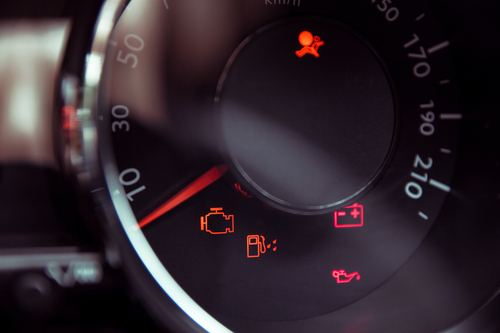Staying Calm: Understanding the Interconnected Systems Behind Check Engine Lights

Imagine driving along the highway, enjoying the scenery and listening to your favorite music, when suddenly, a bright orange light pops up on your dashboard – the dreaded check engine light. Your heart may start racing, thoughts of expensive repairs may flood your mind, and panic may set in. But before you jump to conclusions or start to stress, it’s important to understand that the check engine light is simply a warning sign that something is amiss in your vehicle’s intricate system. In this blog, we will delve into the interconnected systems behind check engine lights, how they work, and what you can do to stay calm and handle the situation effectively.
The OBD System:
The On-Board Diagnostics (OBD) system is the brains behind the check engine light. When a fault is detected in your vehicle’s system, sensors communicate with the OBD system to trigger the check engine light. This system is like a built-in mechanic that constantly monitors your vehicle’s performance and alerts you when something needs attention. It’s important to remember that the check engine light is not an indication of the severity of the issue but rather a signal that something requires your attention.
Common Causes:
There are a multitude of reasons why the check engine light may illuminate, ranging from minor issues to more serious problems. Some common causes include a loose gas cap, a faulty oxygen sensor, a misfiring engine, or even a problem with the catalytic converter. While some of these issues may be minor and easily fixed, others may require more in-depth diagnostics and repairs. It’s important to address the issue promptly to prevent further damage and potentially costly repairs down the road.
Interconnected Systems:
Your vehicle is a complex machine with a multitude of interconnected systems that work together to ensure its smooth operation. These systems include the engine, transmission, exhaust, fuel, electrical, and emissions systems, among others. A fault in one system can have a domino effect on other systems, leading to a chain reaction of issues. Understanding these interconnected systems can help you better grasp the root cause of the check engine light and make informed decisions regarding repairs and maintenance.
Staying Calm:
When the check engine light illuminates, it’s natural to feel anxious or stressed. However, it’s important to stay calm and approach the situation with a clear mind. Remember that the check engine light is simply a warning sign and does not necessarily indicate a catastrophic failure. Take a deep breath, pull over to a safe location, and assess the situation. If your vehicle is exhibiting unusual symptoms such as strange noises or a rough idle, it may be best to have it towed to a trusted mechanic for diagnosis and repairs.
Diagnostic Tools:
Modern vehicles are equipped with sophisticated diagnostic tools that can help pinpoint the source of the issue when the check engine light comes on. Mechanics use specialized scanners to access the OBD system and retrieve error codes that indicate the nature of the problem. These error codes provide valuable information that can guide the repair process and save time and money on diagnostics. It’s important to work with a reputable mechanic who has the expertise and tools to diagnose and repair your vehicle effectively.
Regular Maintenance:
Preventative maintenance is key to keeping your vehicle in top condition and minimizing the chances of the check engine light coming on. Regular oil changes, tune-ups, and inspections can help identify and address potential issues before they escalate into major problems. Following the manufacturer’s recommended maintenance schedule is crucial to ensuring the longevity and reliability of your vehicle. By staying proactive and vigilant, you can reduce the risk of unexpected breakdowns and costly repairs.
Summary:
The check engine light may seem daunting, but with a clear understanding of the interconnected systems behind it and a calm approach, you can navigate the situation with confidence. Remember that the check engine light is a helpful tool that alerts you to potential issues in your vehicle’s system. By staying informed, proactive, and working with a trusted mechanic, you can address the issue promptly and keep your vehicle running smoothly. So the next time the check engine light comes on, take a deep breath, assess the situation, and tackle it with a calm and methodical approach. Your vehicle and your peace of mind will thank you in the long run.
Need a Mechanic in La Grande, OR?
If you’re looking for professional assistance with maintaining your Subaru or have any questions about the tips and tricks mentioned, don’t hesitate to reach out to us at Integrity Automotive. Our experienced team is here to provide you with expert service and guidance to ensure your Subaru remains in top-notch condition. We specialize in Subaru maintenance and can help you keep your vehicle running smoothly for years to come. Contact us today to schedule an appointment and experience the difference of choosing Integrity Automotive for all your Subaru’s maintenance needs. Your Subaru deserves the best, and that’s precisely what we offer!
